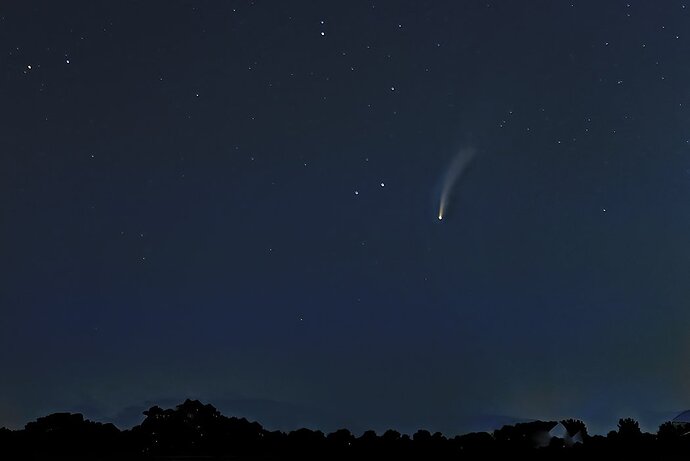Critique Style Requested: Initial Reaction
Please share your immediate response to the image before reading the photographer’s intent (obscured text below) or other comments. The photographer seeks a genuinely unbiased first impression.
Questions to guide your feedback
This is the Neowise Comet captured July 7, 2020.
Other Information
Please leave your feedback before viewing the blurred information below, once you have replied, click to reveal the text and see if your assessment aligns with the photographer. Remember, this if for their benefit to learn what your unbiased reaction is.
Image Description
While driving home from a local friend’s house on July 7, 2020, I overheard on the radio that the Neowise Comet was visible with the naked eye . I am located about an hour South West of Chicago, so from my area the light pollution pretty much wiped the comet out. However, I do have some experience in night and Milkyway photography, so with the help of a couple of phone aps I was able to determine the relative position of the comet from a field down the road from my home and after some trial and error attempts the camera and lens were able to see the comet and I was able to capture it as seen here. To me a comet is the epitome of isolation. It exist in the vast, limitless universe on a set path that in the case of the Neowise comet will allow it to return to our neighborhood in only 6,800 years.
Technical Details
Camera: Sony ILCE-7RM3. Lens: Sony FE 24mm F1.4 GM prime, @ f/2.0 for 25.0 seconds. ISO 400.
Edited in Photoshop using Camera Raw and Topaz filters.
Specific Feedback
Any and all comments welcomed.
